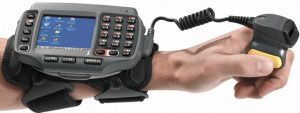How Technology in the Hospital Can Deliver Truly Integrated Care
The journey for a patient entering into your healthcare facility involves successfully overcoming many boundaries within and between facilities. Care is provided from the bedside to the pharmacy to the home, and patients expect this process to be as seamless and thorough as possible. Unfortunately, in society today, the process is often disjointed and inefficient, leading to frustration for both the patient and the healthcare staff.
At a time when budgets tend to be tight and the drive to improve patient care is high, focusing on how different healthcare functions can work together seamlessly is vital for your facility to thrive. By switching to a connected system of care, you can reduce waste, cut costs, and ultimately improve the quality of care you provide to your patients. Change has never been more necessary; and this new automated technology will allow you to transform the way care is delivered and patients are supported.
The digitization of each stage in the care process can lead to better visibility, accuracy, and efficiency, improving the overall patient care your facility provides. By providing your patients and staff with this comprehensive technology, your facility is able to carefully track and record everything into a digital profile, beginning with identification when your patient is first admitted, to the samples that are collected from your patient and the drugs administered to your patient. This technology not only improves the accuracy of each step, but also streamlines the entire process; making it more efficient and affording clinicians’ more of their valuable time to invest in their patients.
Let’s take a look at three of the key areas where technology can help to integrate, enabling truly seamless care.
- KEY AREA: Patient Identification at Admission
- In this day and age, 78% of hospitals still use handwritten wristbands, an alarmingly high percentage when you consider the inherent problems with this system of patient identification. While their use seems to be for good, unfortunately, handwritten wristbands are prone to inaccuracies and misidentification; meaning a mistake is made at the very first point at which patients enter your care. In comparison, printed barcode wristbands are far less prone to human error and offer staff immediate access to patient records.
- KEY AREA: Point of Care
- A digitized system can also transform the process of blood and specimen collection. Before the implementation of this technology, two fundamental problems with sample collection were failure to capture identification properly and failure to label samples at the bedside. This integrated technology is the solution to your problem! Utilizing printers and handheld computers enables a patient to be identified accurately, by scanning their barcoded wristband in conjunction with their electronic health record (EHR), which staff can access instantly, ensuring top-of-the-line care.
- KEY AREA: In the Laboratory
- When the lab receives a sample for testing, the implementation of a digitized system allows the lab to scan the barcode attached to the sample and update the patient’s EHR to confirm receipt of it. While running labs, this system allows for barcodes to be scanned again for ensured accuracy and test results that are automatically sent to the patient’s EHR. Overall, this comprehensive process is more accurate and efficient than ever before. By enabling staff to get test results quicker, you ensure that your staff is providing patients with the best possible care.
With the right technology at each stage of the healthcare journey, rigorous steps are simplified, made more accurate, and staff are given real-time information on their patients. Underpinning the entire process, positive patient ID reduces the risk of misidentification. Furthermore, the addition of pharmacy, drug administration, blood transfusion and discharge documentation to this system, enables your healthcare facilities to offer comprehensive, automated care via a seamlessly integrated solution which facilitates best practice.


Recent Comments